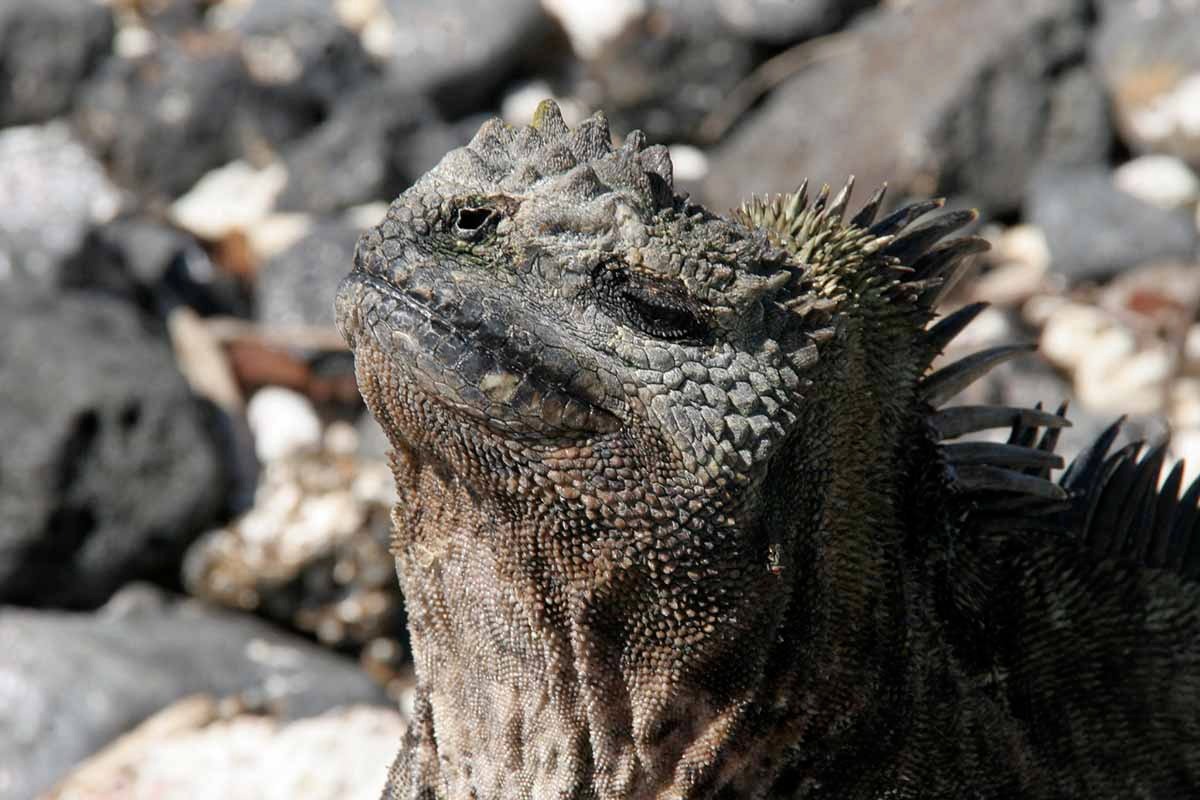AM – South Plaza
South Plaza is located to the east of Santa Cruz Island, and forms part of a pair of islands known as “Islas Plazas”.
Despite its small size, some of the most interesting and outstanding species of the Galapagos are found here. The Plazas land iguanas are smaller than their relatives on other islands. Throughout the island there are several hybrid iguanas, a result of crossing a marine iguana with a land iguana.
They are unique and can be recognised at first glance by their black/grey color, with a land iguana’s crest, but face and tail of the marine iguana. The big population of iguanas is due to the presence of tuna, their favourite food. Swallow tailed gulls nesting in the rugged cliffs are seen along with other seabirds as: audubon shearwaters, red-billed tropicbirds, frigate birds and brown pelicans.
PM – Santa Fe
Located in the southeastern part of the Galapagos, this island was formed from an uplift rather than being of volcanic origin, which is why it is mostly flat. There are some theories which claim that this could be the oldest island in the Archipelago. Santa Fe is home to a number of endemic species like the Galapagos Hawk, Galapagos snake, Galapagos mockingbird, rice rats and one of the two species of lands iguanas of the islands. After disembarking into the beautiful and clear waters you will be in contact with one of the many sea lion colonies. Along the trail many salt bushes can be seen as well as the giant prickly pear cactus – gigantism is a characteristic of oceanic islands. There are many possibilities to snorkel with playful sea lions and tropical fish.


